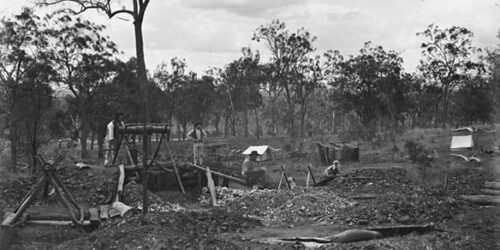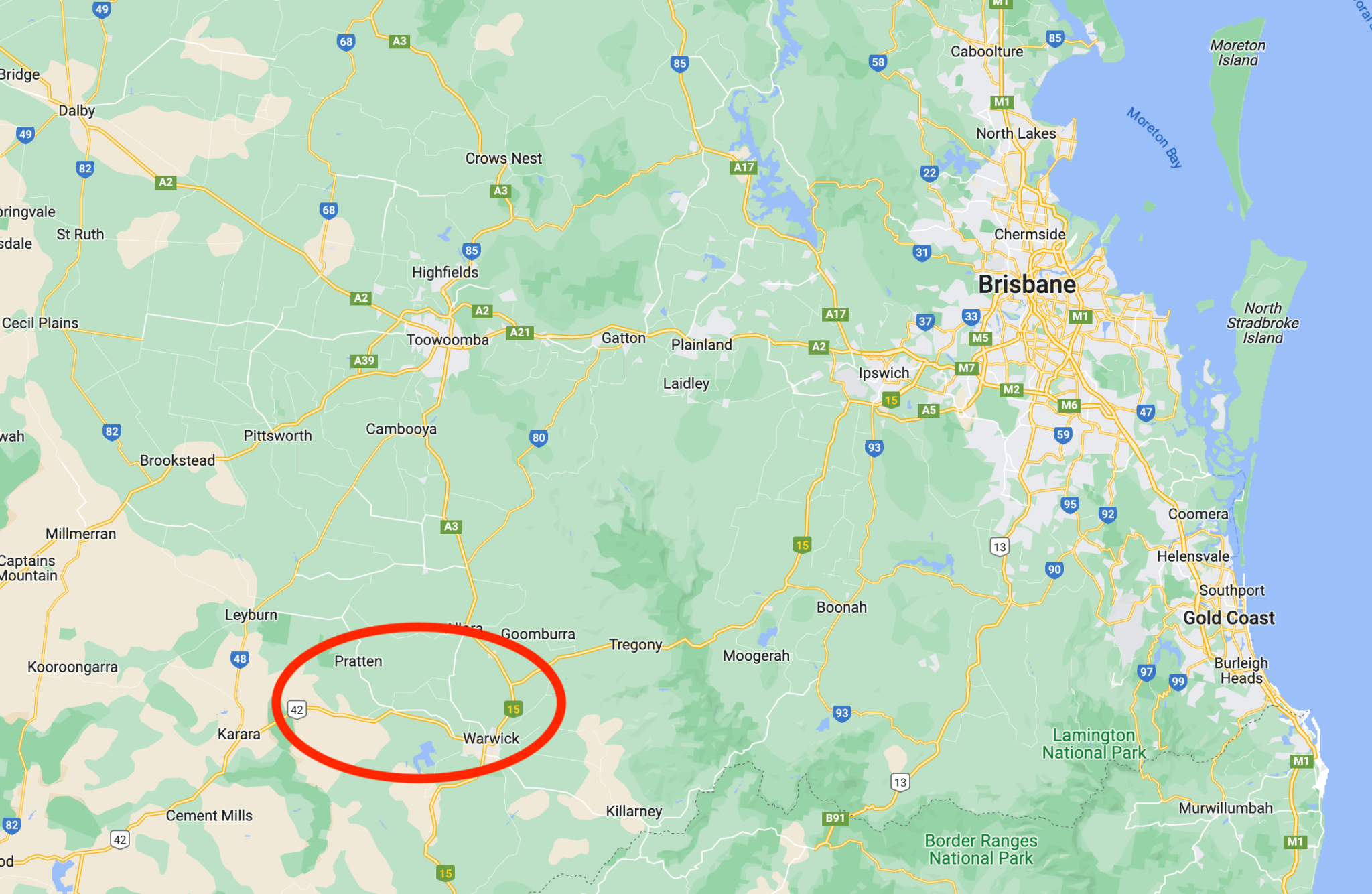
Let’s venturing into the heart of Southern Gold in Queensland Goldfields, deep into the historic Warwick Goldfields. Grab your gear and let’s dig into its rich past and glittering present.
Located an easy 2 hours drive south-west of Brisbane is the historic Warwick Goldfields, these goldfields were discovered back in the 1850s, sparking a flurry of activity that would shape the region for years to come. This was a time when gold fever swept across the country, and the Warwick Goldfields were right in the thick of it.

The goldfields in the vicinity of Warwick include Talgai, Thanes Creek, Leyburn, Canal Creek, Palgrove, Pikedale and Lucky Valley. Gold was first discovered at Lord John Swamp (Lucky Valley goldfield) in 1852. Alluvial gold was discovered at Canal Creek 50km west of Warwick in 1863. Gold was initially discovered at Lord John Swamp, known as the Lucky Valley goldfield, in 1852. In 1863, alluvial gold was found at Canal Creek, located 50 kilometers west of Warwick. The following year witnessed the emergence of the Talgai field, also known as Darkey’s Flat, which supported both alluvial and reef mining activities.
The most abundant alluvial gold was extracted from Dunns Gully, situated 5 kilometers south of Pratten. Meanwhile, the largest reefs worked in this region were found at Mount Gammie North.
In 1868, alluvial gold was unearthed at Thanes Creek, with the first gold reef, named Just-in-Time, being discovered in 1879. Additional reefs, such as the Queen and the King mines, were found in 1881. Leyburn was discovered in 1872, followed by Pikedale in 1877.
The mines experienced consistent activity until around 1884 when many of them encountered water at their lower levels, causing the ore to become pyritic. This led to a general decline in the fields. Subsequently, there was minimal mining activity until early 1887 when another rush occurred following the discovery of gold at Glenelg, south of Warwick. Despite the reopening of some existing mines, the results were not significant. In 1893, the St Patricks (Talgai) and the El Dorado (Thanes Creek) were discovered, followed by Palgrove in 1897.
The Canal Creek Goldfield produced approximately 20,000 ounces of gold prior to the 1900s. However, the discovery of the much larger Gympie Goldfield in that era resulted in a decline in mining activities at Warwick.
The goldfields in question are located on the Warwick SH5602 1:250,000 geological sheet and the Alora 9241 1:100,000 sheet. These areas predominantly consist of rocks from the Devonian to Carboniferous Texas Beds, forming a substantial sequence of interbedded lithic sandstones and mudstones, with minor occurrences of chert, jasper, conglomerate, and limestone units.
Warwick Today
Fast forward to the present day, and you’ll find that the Warwick Goldfields are still teeming with activity. Modern prospectors and hobbyists, armed with the latest detection equipment, continue to scour the area, lured by the same dreams of fortune that drew the original miners.
And they’re not leaving empty-handed. In 2021, a local prospector uncovered a nugget weighing an impressive 50 grams. In 2022, a tourist with a rented metal detector found a 70-gram nugget. These discoveries reaffirm the potential of the Warwick Goldfields and attract a new generation of gold seekers.
Permits and Regulations
Before you dust off your prospecting gear and head to Warwick, it’s crucial to understand the rules of the game. Here’s a quick rundown of what you need to know:
1. Fossicking License: You need one of these to legally prospect in Queensland. It’s easy to obtain online, or at any mining registrar’s office. Folks under 18 don’t require a license if they’re accompanied by a licensed adult.
2. Restricted Tools: To protect the environment, there are restrictions on the equipment you can use. Hand tools are generally fine, but heavy machinery and high-powered detectors are a no-go.
3. Respecting Boundaries: Many areas in the Warwick Goldfields are private land. Always get the landowner’s permission before you start fossicking. There are also designated fossicking lands where you can prospect without specific permission.
The Warwick Experience
Prospecting in Warwick is more than just a hunt for gold. It’s about soaking in the rich history of the area, appreciating the rugged beauty of the landscape, and forming bonds with fellow prospectors.
Last year, I met a bloke named Tim while panning at the Condamine River. He shared stories of his prospecting adventures, his eyes lighting up with each tale. It reminded me that the true treasure of gold prospecting is the memories we make along the way.
So, whether you’re an experienced prospector or just starting out, Warwick Goldfields is a place of golden opportunities. Always respect the land, follow the rules, and always keep the spirit of adventure alive. Happy fossicking!
Tags: gold-locations, prospecting, warwick